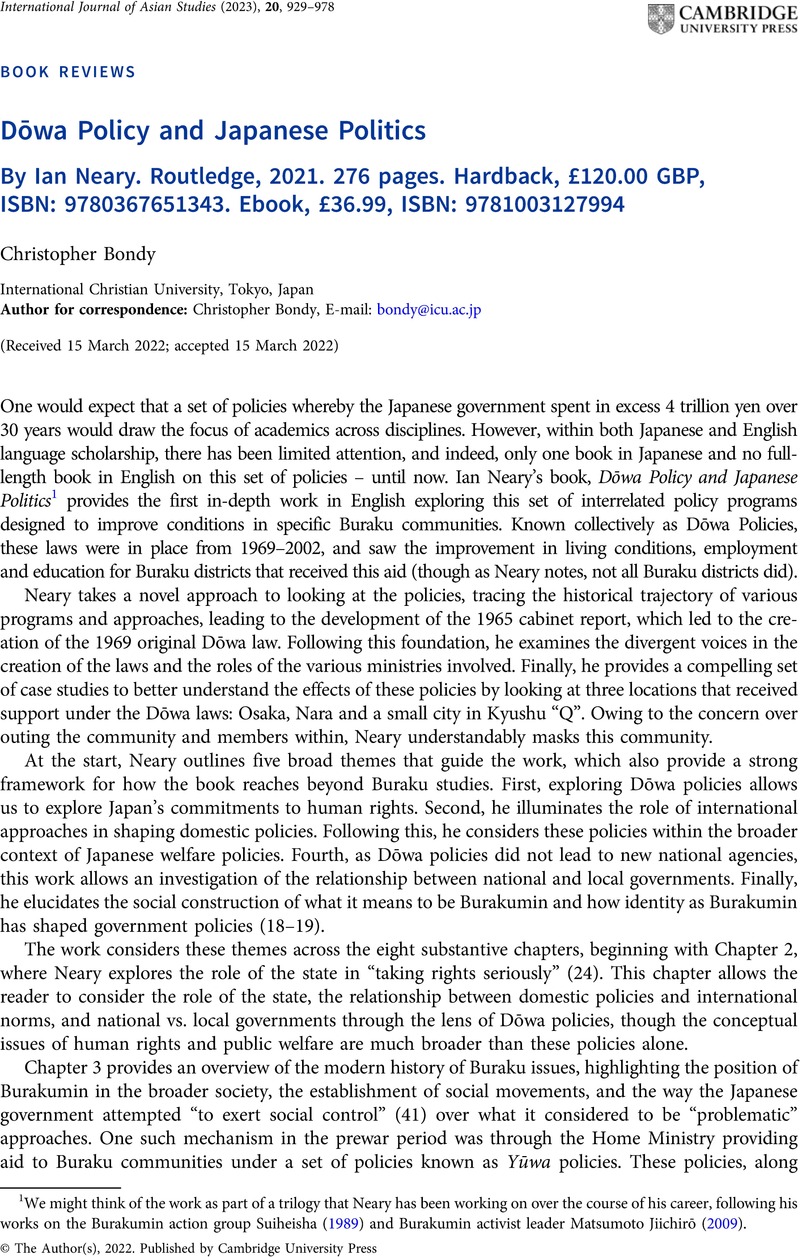No CrossRef data available.
Article contents
Dōwa Policy and Japanese Politics By Ian Neary. Routledge, 2021. 276 pages. Hardback, £120.00 GBP, ISBN: 9780367651343. Ebook, £36.99, ISBN: 9781003127994
Review products
Dōwa Policy and Japanese Politics By Ian Neary. Routledge, 2021. 276 pages. Hardback, £120.00 GBP, ISBN: 9780367651343. Ebook, £36.99, ISBN: 9781003127994
Published online by Cambridge University Press: 21 April 2022
Abstract
An abstract is not available for this content so a preview has been provided. Please use the Get access link above for information on how to access this content.

- Type
- Book Review
- Information
- Copyright
- Copyright © The Author(s), 2022. Published by Cambridge University Press
References
Neary, Ian (1989). Political Protest and Social Control in Prewar Japan: The Origins of Buraku Liberation. Manchester: Manchester Univesrity Press.Google Scholar
Neary, Ian (2009). The Buraku Issue and Modern Japan: The Career of Matsumoto Jiichiro. London: Routledge.CrossRefGoogle Scholar



